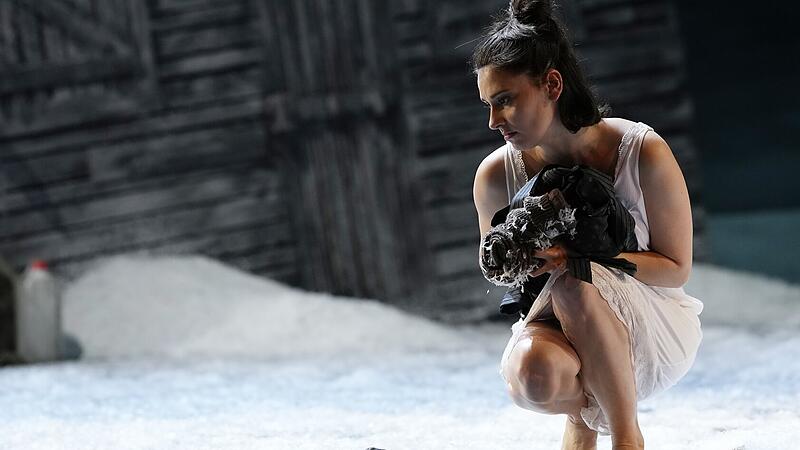On Saturday, the commissioned opera “Unter dem Gletscher” had its world premiere after a two-year corona-related postponement at the Linz Music Theater. The second collaboration between composer Michael Obst and artistic director, librettist and director Hermann Schneider, which this time once again sends a naïve observer with a limited world view into a surreal situation: The novel “Kristnihald undir Jökli”, written by Halldór Laxness 1968 – 13 Years after being awarded the Nobel Prize for Literature – wrote, cannot deny a certain bizarreness and juggles literary set pieces: allusions to world religions, Icelandic and other literary classics, economic developments and the esoteric of the burgeoning flower power generation.
What is the pastor doing?
The pastoral care that Father Jon Primus bestows on people and animals in a small village at the foot of the Snæfellsjökul glacier volcano is of a very special kind. The bishop is worried because the man is not repairing the church, not baptizing the children and not burying the dead . And what about the corpse that is said to have been taken to the glacier? The young theologian Vebi, equipped with a tape recorder and a writing pad, is sent to check on the proceedings. He makes strange acquaintances, hears fabulous stories and gets involved in crude disputes. And he encounters a “truth” that cannot be recorded.
It’s all nice, but the work lacks topicality and explosiveness. The novel will only be read by those who want to see the world of the 1960s from a different perspective, but not by those who want to get to the bottom of burning issues of the moment. On top of that, the plot is difficult to translate into music.
Because just like the libretto, which runs along the novel, the music also tries to capture the bizarre, even the surreal madness of the encounters and to be bizarre. It, too, is paved with set pieces from music history: a panopticon spans from children’s songs to finely researched Icelandic folk songs, chorale-like melodies to jazz and musical sounds as well as romantic orchestral indulgence.
The seven “Vogelmusic”, which act as interludes and use instruments to trace original recordings of Icelandic bird species, are also reminiscent of models – namely the “Sea Interludes” from Britten’s Peter Grimes.
It has become a number opera whose scenes hardly come together in their musical peculiarity. And that is tiring with a work of almost three and a half hours. Especially when the music, even if it plays in a scene with new attributes, is expected.
Many left during the break
Among other things, this fact allowed a large number of premiere visitors to flee into the balmy summer evening during the break after the two-hour first part, which was suspicious of Wagner.
In a naturalistic setting (designed by Falko Herold), Hermann Schneider worked out the irony of the original in his direction, at least to some extent. The ensemble of singers – above all Anna Alás i Yove as Vebi, who is brilliant in all situations, Fenja Lukas as a meticulous character study of the sturgeon dora (the pastor’s housekeeper) and Tina Josephine Jaeger as the convincing Fina – has achieved a great achievement, but also created tight moments. Ingmar Beck managed to capture the complexity of the score at the podium of the Bruckner Orchestra, which played accurately. The performers – Dominik Nekel, Vaida Raginskyte, Michael Wagner, Matthäus Schmidlechner, Martin Achrainer, Peter Fabig, Michael Daub, Domen Fajfar, Gotho Griesmeier, Hans Schöpflin – received the most applause. The rest of the audience had a friendly respect for the composer and the leading team.
- Opera, Music Theater Linz: “Under the Glacier” by M. Obst and H. Schneider (also directing), Premiere: May 21, dates until July 7. www.landestheater-linz.at
Source: Nachrichten




